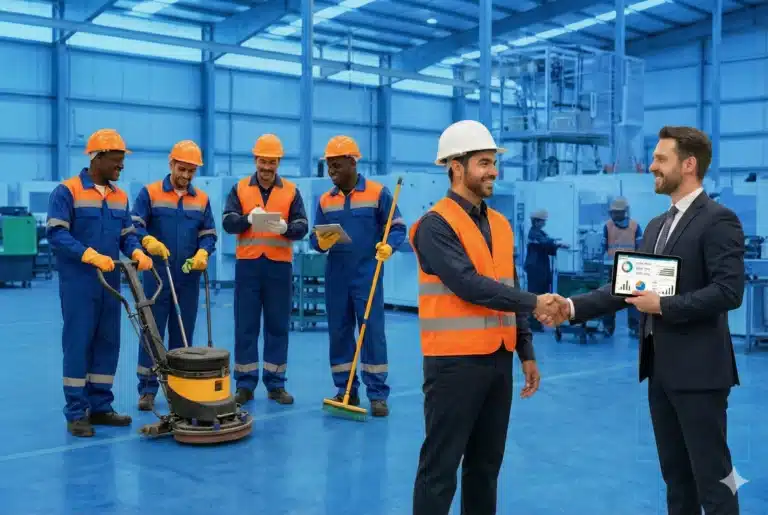Driving a company car carries its hazards and responsibilities, shared by both the worker and their employer. To face this scenario, we must adopt basic precautions, such as respecting the Traffic Law and practicing the respective preventive maintenance, among other essential considerations.
We have seen in other articles that logistics is one of the fundamental pillars for the growth and consolidation of any company. This translates into a large number of business vehicles, light and heavy, circulating on streets and highways around the world. Circumstance that, in turn, implies a greater probability of having an accident with one of them.
This is an undeniable reality, particularly in our country, where an increasing proportion of the population has access to their own car.
How do we define the responsibilities
When we drive a company car, we acquire a “two-way responsibility”. While it is true that workers/drivers are responsible for their behavior behind the wheel, the employer cannot avoid his responsibility when facing the consequences of an accident caused by any of the company’s assets.
This is even more evident if the driver of the company car acts irresponsibly, constantly repeats dangerous behavior, and his employer does nothing to prevent it, despite being aware of the dangers associated with this type of irresponsibility.
Therefore, both the employer and the organization’s safety and training teams have the duty to educate on road behavior for all workers who sit behind the wheel of a company car. Not only because the vehicle is an important asset, but also because the life and health of the worker/driver and other users of streets and highways are also involved.
According to legal experts, in strict theory the accident caused by a company vehicle in Chile can give rise to two types of civil liability:
a) The contract, if, prior to the damage, there was a contract between the employer and the victim (for example, a land transport contract).
b) Non-contractual, if the damage occurred without any prior link, or if the damage occurred completely independently of a contractual link.
A clear example of this last variable are those accidents resulting in damage to pedestrians, cyclists, other drivers and even guest passengers (those picked up by the driver during an intercity or interregional trip).
For each of these cases there are various repair mechanisms, as well as specific insurance, whose coverage varies according to the accident or the respective contractual conditions established between the parties.
When are drivers responsible for the company car
Civil liability for injuries to other people or damage caused by a business vehicle rests primarily with its owner. In this case, the company or its legal representative.
However, non-owner drivers may be jointly and severally liable for damages or injuries caused in an accident, if any of the following conditions are met:
- Driving without a license, or using one that does not correspond to the type of vehicle driven. In Chile, for example, this condition can occur if the worker drives a truck, minibus for more than eight passengers, or a rental car, having only a “Class B” license.
- Driving at excessive speed, without paying attention to traffic conditions, talking on the phone, or without respecting traffic signals.
- Transport cargo without properly securing it.
- Not being able to drive due to being intoxicated, under the influence of drugs or subjected to the effects of any disabling medication.
How should the entrepreneur act
First of all, the supervisors, managers or legal representatives of the company, as appropriate to their internal regulations, must do everything necessary so that their drivers behave attentively, safely and efficiently while driving. Whether inside the company’s facilities (such as in a mine, construction or forestry), or on trips outside (in the city or on the highway).
This is equally valid when the action of driving is part of the job (in transport and logistics companies), or constitutes a journey to or from the usual place of work (to attend a meeting or to go to or from home, in a vehicle provided by the company for this purpose).
In each of these situations, the employer must take all pertinent actions to guarantee the health, safety and well-being of both his employees and other road and street users.
This necessarily implies ensuring that the person practices safe driving and, at the same time, uses vehicles in good mechanical condition.
It is also the duty of the employer to verify that the workers who will drive any of the company’s vehicles have the correct and valid driver’s license. In Chile, this implies a “Class B” license, for cars and trucks; and Class A (of various types), for taxis, collective taxis, trucks, buses and passenger minibuses.
In addition, it is important to check the official transport department resume of each driver, to check periodically if he has committed serious or very serious offenses, or if he has his license withheld or suspended for this reason.
In the same way, it is important to provide the worker-driver with constant competences-training courses and safety training, including defensive driving techniques and good behavior on the roads. This includes proper knowledge of and compliance with traffic laws (such as respecting traffic lights and marked crossings, giving way at crosswalks, and not talking on the phone while driving, among other aspects).
The employer also makes sure that his employees are physically fit to drive. Especially those who use Class A licenses and drive heavy vehicles or transport passengers as a regular job. In addition, he needs to strictly and periodically control working hours through computer systems and online applications.
In Chile, the Law specifically establishes that professional drivers, both cargo and passengers, must not drive more than five continuous hours, after which they must have a break, whose minimum duration of two hours.
And what about the company car?
In all these cases, the duty of the company and its legal representatives lies in constantly checking and reviewing that the vehicles used to transport its personnel or cargo are:
- Fit for the job. A car is perfect for moving workers to meetings or appointments with clients, but for distributing merchandise, for example, is more appropriate a cargo van or a pick-up truck.
- Regularly checked and maintained. In general, automotive manufacturers recommend an intensive preventive review every 12 months, or after 10,000 kilometers, especially for those vehicles with a high degree of use in the city or on the highway.
To do this, we can also use an app or specialized software that allows us to apply a detailed checklist of each of the variables that must be verified, so that preventive maintenance is carried out in a detailed and efficient manner.
This care as an employer also applies in those cases when the company uses vehicles of contractors or subcontractors, and even if workers use their own car for work tasks, which it is suggested that they be duly specified in their respective contracts.
It is also necessary to verify the route which will be followed, because there are various considerations that are not always taken into account, and can cause an accident, such as:
- Height and weight restrictions on bridges and tunnels
- Presence of service facilities at regular intervals (to refuel or resolve eventual mechanical failures).
- Traffic conditions.
- Weather status.
Download the DataScope app and start now!
DataScope is the ideal tool to eliminate paper use, save time, and efficiently collect data from the field. It allows companies to streamline, organize and evaluate field work thanks to its online forms, which provide indicators in real time, 100% adaptable to any area.
With DataScope, your team can answer custom mobile forms from their phones or tablets, online or offline, through the app.






